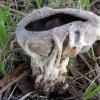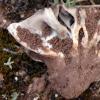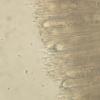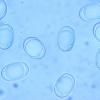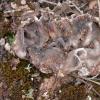
15-12-2025 15:48
 Danny Newman
Danny Newman
Melanospora cf. lagenaria on old, rotting, fallen

15-12-2025 15:54
 Johan Boonefaes
Johan Boonefaes
Unknown anamorph found on the ground in coastal sa

15-12-2025 21:11
 Hardware Tony
Hardware Tony
Small clavate hairs, negative croziers and IKI bb

15-12-2025 07:09
 Danny Newman
Danny Newman
indet. Rutstroemiaceae sp. on unk. fallen leavesMc

15-12-2025 07:05
 Danny Newman
Danny Newman
Pseudosclerococcum golindoi (det: Zotto)near Cosb

15-12-2025 11:49
 Danny Newman
Danny Newman
ITS sequences from the following two collections B

15-12-2025 12:34
 Danny Newman
Danny Newman
indet. Rhytismataceae on oak leafnear Purchase Roa

09-12-2025 12:06
 Andgelo Mombert
Andgelo Mombert
Bonjour,Je recherche l'article concernant Hypobryo
 Hello,
Hello,Helvella are epigeous fungi but these Helvella live entirely underground and they are fully mature underground. Macroscopic and microscopic features, at maturity, are like Helvella costifera: irregular cup-shaped, 2-9 cm broad, up to 9 cm high. Asci 250-300 x 13-15 µ, paraphyses 3-5 µ, spores 15-16 X 10-12 µm Q=1,33-1,60
Habitat: Hypogeous under Quercus ilex subsp. ballota in clay and limestone soils. Mars through May
Video: http://www.youtube.com/watch?v=1oGm4ZK7Gx4
Thanks in advance for any help you are able to provide
Antonio Rodriguez
¿Alguien conoce una Helvella hipogea?
Hola,
El género Helvella está formado por especies epigeas, pero esta Helvella completa su ciclo completamente hipogea. Nos la encontramos todos los años en terrenos arcillosos y calizos, bajo Quercus ilex subsp. ballota, desde marzo hasta mayo. Detectamos su presencia por los bultos y las grietas que hace en el terreno, pero nunca hemos llegado a verla fuera de la tierra.
Su aspecto macroscópico y microscópico es compatible con Helvella costifera: forma de copa irregular, 2-9 cm. de ancho, hasta 9 cm de alto. Ascos: 250-300 x 13-15 µ, paráfisis 3-5 µ, esporas 15-16 X 10-12 µm Q=1,33-1,60.
Vídeo: http://www.youtube.com/watch?v=1oGm4ZK7Gx4
Se agradecen opiniones
Antonio Rodríguez
Donadini J.C. et al. 1975 [1976] Bull. Soc. Mycol. France 91(4): 555

I always harvested H. semiobruta almost buried semiobruta and a single harvest of H. astieri who was épigéeous

I did not know neither Helvella semiobruta nor Helvella astieri, but they look very different from my Helvella.
I think the hipogeous habit of this Helvella is an adaptation to dry habitats where it grows.
A future truffle!
Antonio Rodríguez
Gracias por las respuestas,
No conocía ni la H. semiobruta ni la H. astieri, pero son muy diferentes a mi Helvella.
Creo que el desarrollo hipogeo de esta Helvella es una adaptación a un hábitat demasiado seco para una Helvella.
¡Un futura trufa!
Antonio Rodríguez
